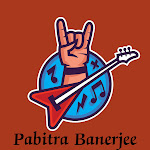Know How Earth avoided a Mars-like fate? Scientists has found the original reason behind it. Check it now . Complete Details . Here we'll talk about the reasons behind : How Earth avoided a Mars-like fate?
Approximately 1,800 miles under our toes, swirling liquid iron inside the Earth's outer center generates our planet's defensive magnetic area. This magnetic subject is invisible. But is essential for lifestyles on Earth's surface. As it shields the planet from solar wind—streams of radiation from the solar.
From about 565 million years in the past, the magnetic subject's energy decreased to ten 10% of its energy today. Then, mysteriously, the field bounced again, regaining its electricity simply earlier than the Cambrian Explosion of multicellular existence on Earth.
What prompted the magnetic area to get better?
According to new studies from scientists at the University of Rochester, this rejuvenation occurred inside a few 10 millions of years—fast on geological timescales—and coincided with the formation of Earth's solid inner core, suggesting that the core is likely an immediate purpose.
"The internal middle is surprisingly important," says John Tarduno, Professor of Geophysics inside the Department of Earth and Environmental Sciences. "At first the internal core started grow. Then the magnetic subject was on the point of disintegrate. However as soon because the internal center started to develop, the sector became regenerated."
In the paper, posted in Nature Communications, the researchers determined numerous key dates inside the inner core's history, such as a greater unique estimate for its age. The research gives clues about the history and destiny evolution of Earth . And how it have become a habitable planet, in addition to the evolution of other planets inside the solar system.
Unlocking Data in ancient Rocks
Layer division of Earth : The Crust, Here life exists. The Mantle, Earth's thickest layer. The Molten, outer center. And the strong internal middle, which is in flip composed of an outermost internal middle and an innermost inner middle.
There is magnetic area in Earth's outer core. In which swirling liquid iron causes electric powered currents. This is Geodynamo Phenomenon, which produces the magnetic field.
There is a magnetic field's courting to Earth's core. So scientists are trying for so long to know how Earth's magnetic field and center have changed at some point of our planet's records. They can't directly measure the magnetic field because of the location and extreme temperatures of materials in the core. Minerals, that rise to Earth's surface contain tiny magnetic debris. That lock within the course and intensity of the magnetic field when the minerals cool from their molten state.
To higher constrain the age and boom of the inner middle, Tarduno and his crew used a CO2 laser and the lab's superconducting quantum interference device (SQUID) magnetometer to analyze feldspar crystals from the rock anorthosite. These crystals have minute magnetic needles within them which can be "ideal magnetic recorders," Tarduno says.
By reading the magnetism locked in ancient crystals—a area called paleomagnetism—the researchers decided new essential dates in the records of the inner center:
- 550 million years in the past: the time at which the magnetic area started to resume unexpectedly after a close to fall apart 15 million years before that. The researchers attribute the speedy renewal of the magnetic discipline to the formation of a solid inner core that recharged the molten outer center and restored the magnetic subject's electricity.
- 450 million years ago: the time at which the growing internal center's shape changed, marking the boundary among the innermost and outermost internal core. These modifications inside the internal center coincide with modifications around the same time in the shape of the overlying mantel, due to plate tectonics on the floor.
"Because we restricted the inner center's age more accurately. We could discover the reality that the existing-day internal middle is truly composed of two parts," Tarduno says. "Plate tectonic actions on Earth's floor circuitously affected the internal core. And the history of those movements is imprinted deep within Earth within the inner core's shape."
 |
| Earth’s inner core lies far below the surface, making it difficult to study. Credit: iStock.com/fpm |
Avoiding a Mars-like fate
Better knowledge the dynamics and growth of the inner middle and the magnetic subject has critical implications, not only in uncovering Earth's beyond and predicting its future, however in unraveling the methods in which different planets may form magnetic shields and maintain the situations important to harbor life.
Researchers trust that Mars, for example, as soon as had a magnetic field. However the subject dissipated, leaving the planet vulnerable to solar wind and the surface with out oceans. While it's miles unclear whether the absence of a magnetic subject might have prompted Earth to satisfy the same destiny. "Earth certainly might've lost a great deal extra water if Earth's magnetic field had not been regenerated," Tarduno says. "The planet might be a whole lot drier and very distinctive than the planet nowadays."
In terms of planetary evolution, then, the research emphasizes the importance of a magnetic guard and a mechanism to maintain it, he says.
"This studies clearly highlights the need to have something like a developing inner center that sustains a magnetic area over the whole lifetime—many billions of years—of a planet."
So I give you the complete information about : How Earth avoided a Mars-like fate ?











